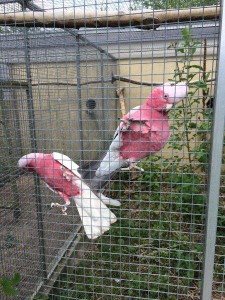PARROTS
Parrots, also known as psittacines are birds of the roughly 372 species in 86 genera that make up the order Psittaciformes, found in most tropical and subtropical regions. The order is subdivided into three superfamilies: the Psittacoidea ("true" parrots), the Cacatuoidea (cockatoos) and the Strigopoidea (New Zealand  parrots). Parrots have a generally pantropical distribution with several species inhabiting temperate regions in the Southern Hemisphere as well. The greatest diversity of parrots is in South America and Australasia.
parrots). Parrots have a generally pantropical distribution with several species inhabiting temperate regions in the Southern Hemisphere as well. The greatest diversity of parrots is in South America and Australasia.
Characteristic features of parrots include a strong, curved bill, an upright stance, strong legs, and clawed zygodactyl feet. Many parrots are vividly coloured, and some are multi-coloured. Most parrots exhibit little or no sexual dimorphism. They form the most variably sized bird order in terms of length.
The most important components of most parrots' diets are seeds, nuts, fruit, buds and other plant material. A few species sometimes eat animals and carrion, while the lories and lorikeets are specialised for feeding on floral nectar and soft fruits. Almost all parrots nest in tree hollows (or nest boxes in captivity), and lay white eggs from which hatch altricial (helpless) young.
Parrots, along with ravens, crows, jays and magpies, are among the most intelligent birds, and the ability of some species to imitate human voices enhances their popularity as pets. Trapping wild parrots for the pet trade, as well as hunting, habitat loss and competition from invasive species, has diminished wild populations, with parrots being subjected to more exploitation than any other group of birds. Measures taken to conserve the habitats of some high-profile charismatic species have also protected many of the less charismatic species living in the same ecosystems.
Check the menu to see what is in house for now.....